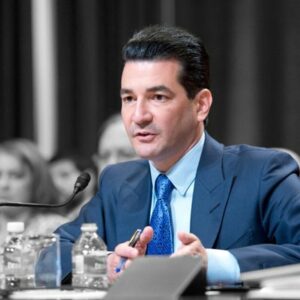With non-stop news reports of desperate Americans driving hundreds of miles just for the chance of getting a COVID-19 vaccine, it may sound counterintuitive, but public health experts say the looming crisis isn’t a lack of shots, but a lack of arms to put them in.
On Thursday, Dr. Anthony Fauci shocked NBC’s Savannah Guthrie when he predicted “open season” for vaccine access by April.
“As we get into March and April, the number of available doses will allow for much more of a mass vaccination approach,” he told the Today show host. “I would imagine by the time we get to April, that will be what I would call, for lack of a better word, ‘open season.’ Virtually everybody and anybody in any category could start to get vaccinated.”
Savannah shouldn’t have been surprised. Public health experts have been warning for weeks the real challenge in reaching herd immunity isn’t going to be access to vaccines, but rather the unwillingness of Americans to take them.
“At some point, perhaps in April, supply will start exceeding demand. The challenge won’t be how to ration a scarce resource, but how to reach patients reluctant to get vaccinated,” former Food And Drug Administration chief Dr. Scott Gottlieb said in a recent Wall Street Journal op-ed. “The focus now is on expanding distribution and increasing supply. The problems will soon shift to the demand side of the equation.”
Gottlieb repeated his concerns during a podcast interview with National Review’s Rich Lowry:
“I think we’re going to be in a world where there’s a demand problem very soon,” he said. “And I would guess by the end of March, if governors are still in the mode of rationing the vaccine and designating certain prioritized groups, they’re going to have to flip very quickly.”
It’s a hard concept to grasp at a time when vaccination centers in Pennsylvania and California are temporarily closing due to lack of supply. One non-believer is New Hampshire Gov. Chris Sununu (R), who told InsideSources he thought the former FDA chief’s suggestion was “silly.”
“We’re not going to have too much vaccine and not enough demand by the end of March,” Sununu insisted. “Even if Moderna and Pfizer and Johnson & Johnson meet their goals, that will mean barely enough supply here in New Hampshire to take care of Phase 1B, nevermind getting to Phase 2A or 2B.
“So even if the uptake is less in those subsequent phases — and I suspect it will be — there’s no reason to think that we’re not gonna have enough people to take the vaccine by the end of March. I think that’s a silly statement, frankly.”
But other health experts, like Dr. Fauci, agree with Gottlieb. And some financial advisors are now saying the stock prices of drug companies producing vaccines may be overvalued due to the coming oversupply.
To Gottlieb, it’s simple math: Once the most motivated people — older Americans, at-risk people, and frontline health workers –have been vaccinated, that will mean about 75 million Americans will have their shots. But reaching herd immunity requires somewhere between 179 million and 217 million vaccinations. And, he says, you’re not going to get to that level of vaccinations from senior citizens and first responders.
“You’re going to need to get 30-year-olds and 20-year-olds,” Gottlieb says, and these aren’t people who will drive hundreds of miles or stand in line at a clinic for hours to get jabbed. “Does it really convince a 30-year-old, or even 40-year-old, to get the shot when they see Tony Fauci get vaccinated on TV,” Gottlieb asks. “Maybe we should get Lady Gaga.”
Particularly when they’re being told again and again that their lives won’t change even after they got the vaccine, that they’ll still be stuck social distancing from behind a mask. Some public health officials say that message will discourage participation by younger Americans.
White House spokesperson Jen Psaki telling young people that mask-wearing and social distancing will still be “essential” even after they’ve gotten their shots is going to depress vaccine uptake, health experts fear.
“We’re underselling the vaccine,” infectious-disease specialist Aaron Richterman told the New York Times, Harvard epidemiologist Julia Marcus warns, “trying to eliminate even the lowest-risk changes in behavior both underestimates people’s need to be close to one another and discourages the very thing that will get everyone out of this mess: vaccine uptake.”
“You have to start stimulating demand,” Gottlieb told Lowry. “You have to start really working harder to get people in. You can’t just turn that on March 31st when you’re a governor and you see you don’t have enough demand to keep up with supply.”
Another part of the problem is a significant number of Americans are still reluctant to get the vaccine. A new Associated Press-NORC Center for Public Affairs Research poll found 32 percent of Americans are either refusing or unlikely to get vaccinated. A majority of those who say they will never get vaccinated told pollsters they either worry about side effects or don’t have confidence the shots will be safe.
“I don’t trust pharmaceuticals. I really don’t. And it doesn’t sound like it’s going to be safe,” Debra Nanez, a 67-year-old retired nurse from Tucson, Arizona, told the AP.
Which is why, Gottlieb says, the effort to motivate Americans to get vaccinated can’t wait until the supply is here. “I think there’s a vaccine hesitancy and a demand problem,” he said. “We need to be addressing that right now. And we’re just not doing that.”

